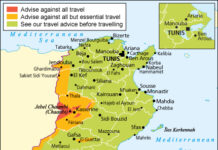
But Mr. Karger recognized how the internet had lowered barriers to rallying consumers. Instead of relying on national organizations to mediate their activism, individuals could start and promote their own boycotts. While news organizations covered his protest at the Grand Hyatt, he was not dependent on them to get out information; he disseminated information about his targets on a blog.
They treated Mr. Karger’s boycott not as a stratagem but as a breach of decorum. Many instinctively responded (much like those who today cry “cancel culture”) by celebrating their victimhood. Mr. Manchester said it was a “free-speech, First Amendment issue.” Brian Brown — the executive director for California of the National Organization for Marriage, the leading single-issue anti-gay-marriage group, led by people with close ties to leaders in the Catholic Church and the Church of Jesus Christ of Latter-day Saints — boasted after the Grand Hyatt protest that Mr. Karger’s “bullying” had backfired. The “stunt they pulled against Doug Manchester ended up raising $100,000 for the amendment in 24 hours,” Mr. Brown said in a message to supporters, “and prompted at least 2,000 new marriage supporters to join our ranks.”
But Mr. Manchester did not remain sanguine for long. The next year, he dispatched an aide to an International Gay and Lesbian Travel Association conference with an offer: $25,000 in cash and $100,000 in hotel credits for dropping the boycott. No one appeared to accept the deal, and Mr. Karger kept up the pressure on the hotels, persuading business groups to yank conferences. In late 2010, Mr. Manchester was forced to sell the property.
Others on the receiving end of Mr. Karger’s boycotts attempted to push back. Protect Marriage challenged California’s campaign-finance system in federal court, arguing that disclosure rules threatened First Amendment freedoms with a “systematic attempt to intimidate, threaten and harass donors to the Proposition 8 campaign.” In 2009, the National Organization for Marriage sued Maine, arguing that laws requiring the release of donors’ names were unconstitutional. (Courts upheld both states’ campaign-finance regimes.)
At the same time, the U.S. Supreme Court opened up channels for corporations to spend freely on campaigns, and Mr. Karger was a model for other online rabble-rousers. In the summer of 2010, lefty activists pushed Target to repudiate its $150,000 donation to MN Forward, an independent group formed to marshal corporate funds for Republican gubernatorial candidate Tom Emmer. MoveOn collected 150,000 signatures on an anti-Target petition, and 44,000 people expressed support for a Facebook page calling for a nationwide boycott because Mr. Emmer supported a constitutional amendment to define marriage as between one man and one woman. That threat led Target’s chief executive, Gregg Steinhafel, to deliver an unusual message to employees saying he was “extremely sorry” for having approved the donation.
By the time marriage came to four states’ ballots in November 2012, it was clear activists had succeeded in making it “socially unacceptable to give vast amounts of money to take away the rights of a minority,” as Mr. Karger put it. Only five individuals, none of them well known nationally, contributed over $100,000 to any of the anti-gay-marriage campaigns in 2012.
Even religious denominations responded to the new pressure. In Maine, the Catholic Diocese of Portland, which had donated $550,000 to pass Question 1, a 2009 ballot measure banning same-sex marriage, did not directly contribute anything when the issue came up again in 2012. Alan Ashton — a WordPerfect co-founder who served as a Church of Jesus Christ of Latter-day Saints bishop and stake president and was a grandson of a former church president — donated $1 million to Yes on 8. Four years later, he, too, seemed to have walked away from the issue.








